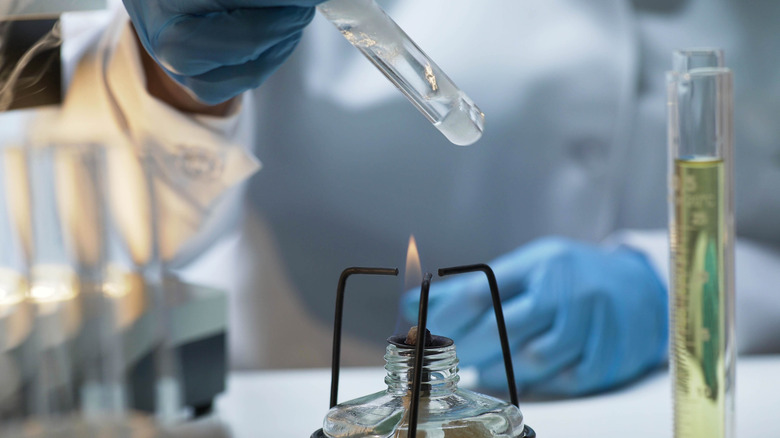What Role Does Heat Play In Chemical Reactions?
As it is a form of energy, heat plays multiple important roles in chemical reactions. In some cases, reactions need heat to begin; for example, a camp fire requires a match and kindling to get it started. Reactions consume heat or produce it depending on the chemicals involved. Heat also determines the speed at which reactions occur and whether they proceed in a forward or reverse direction.
TL;DR (Too Long; Didn't Read)
Generally speaking, heat will help speed up a chemical reaction, or drive a chemical reaction that wouldn't be able to occur otherwise.
Endothermic and Exothermic Reactions
Endothermic and Exothermic Reactions
Many familiar chemical reactions, such as the burning of coal, rusting and exploding gunpowder, give off heat; chemists call these reactions exothermic. Because reactions liberate heat, they increase the ambient temperature. Other reactions, such as combining nitrogen and oxygen to form nitric oxide, take in heat, reducing the ambient temperature. As they remove heat from their environment, these reactions are endothermic. Many reactions both consume and produce heat, but if the net result is to give off heat, the reaction is exothermic; otherwise, it is endothermic.
Heat and Molecular Kinetic Energy
Heat and Molecular Kinetic Energy
Heat energy manifests itself as the random jostling motions of molecules in matter; as the temperature of a substance increases, its molecules vibrate and bounce with more energy and at faster speeds. At certain temperatures, vibrations overcome the forces that make molecules stick to one another, causing solids to melt into liquids, and liquids to boil into gases. Gases respond to heat with an increase in pressure as molecules collide against their container with greater force.
Arrhenius Equation
Arrhenius Equation
A mathematical formula called the Arrhenius equation links the speed of a chemical reaction to its temperature. At absolute zero, a theoretical temperature that cannot be reached in a real-life lab setting, heat is completely absent and chemical reactions are nonexistent. As temperature increases, reactions take place. Generally, higher temperatures mean faster reaction rates; as molecules move about more quickly, reactant molecules are more likely to interact, forming products.
Le Chatelier’s Principle and Heat
Le Chatelier's Principle and Heat
Some chemical reactions are reversible: Reactants combine to form products, and products rearrange themselves into reactants. One direction releases heat and the other consumes it. When a reaction can happen either way with equal likelihood, chemists say it is in equilibrium. Le Chatelier's principle states that for reactions in equilibrium, adding more reactants to the mix makes the forward reaction more likely and the reverse less so. Conversely, adding more products makes the reverse reaction more probable. For an exothermic reaction, heat is a product; if you add heat to an exothermic reaction in equilibrium, you make the reverse reaction more likely.
Cite This Article
MLA
Papiewski, John. "What Role Does Heat Play In Chemical Reactions?" sciencing.com, https://www.sciencing.com/role-heat-play-chemical-reactions-13455/. 27 April 2018.
APA
Papiewski, John. (2018, April 27). What Role Does Heat Play In Chemical Reactions?. sciencing.com. Retrieved from https://www.sciencing.com/role-heat-play-chemical-reactions-13455/
Chicago
Papiewski, John. What Role Does Heat Play In Chemical Reactions? last modified August 30, 2022. https://www.sciencing.com/role-heat-play-chemical-reactions-13455/
